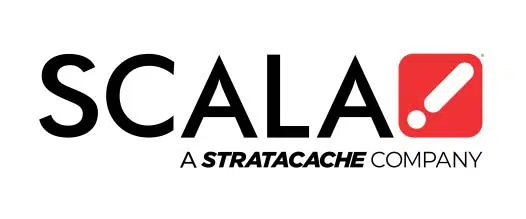What is Digital Signage? Everything You Need to Know About Digital Signage in India
by Scala Team
What is Digital Signage? Everything You Need to Know About Digital Signage in India
by Scala Team

What is Digital Signage?
Technology has developed over the years that it is now fundamental to how rapidly we share information. With so much content to consume, how could you possibly get your message noticed; more importantly, how could you get your customers to be engaged and persuade them to take actionable steps to achieve your business goals?
Likewise, India is experiencing an information boom with the widespread use of digital channels to share and consume data. Content is coming and going in such a rapid pace that it hardly makes a lasting impression to consumers, but one way to make it outstanding is to enhance visibility. This used to take on the form of printed materials, where the bigger and louder it is, the more people stop and take notice. Think full-page ads in newspapers and magazines, flyers and brochures, or large billboards along the highways as you drove along.
However, traditional printed signs have been sunsetting for some time now, taken over by the emergence of digital signage as a more powerful and persuasive communication tool, with more attention-catching visuals, efficiency in messaging, and flexibility to adjust to customers’ needs.
Digital Signage Defined
Digital signage is the use of a display screen, such as LCD, LED, OLED or projector, to show multimedia content for marketing and communication purposes to a targeted audience. The content used for a digital signage is usually managed in a content management software (CMS) for ease and efficiency.
Use of digital signage in India does not just come as a display on the screen, display signage kiosks are becoming popular as an interactive tool that customers can immerse in for better communication. These are common in retail stores, malls, leisure parks, and healthcare facilities to provide assistance, digital menu boards at hotels and restaurants, electronic media boards on highways, and in office buildings, educational and religious institutions, transport hubs and commercial areas to keep customers informed and engaged.
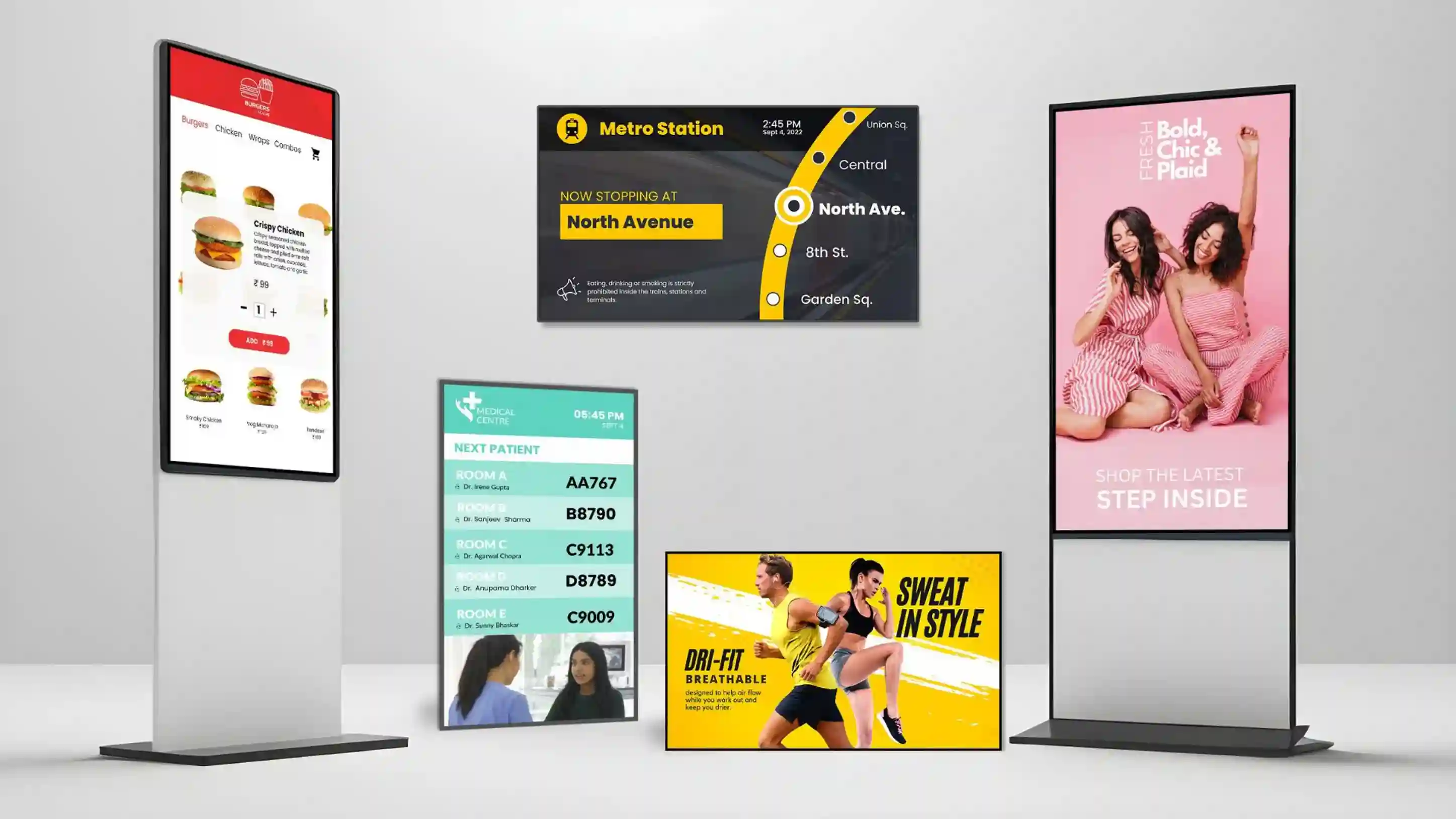
Digital Signage Technology
Before digital signage technology was developed, changing a signage meant redoing content in a separate design software, sending the artwork file to the printers for production, and manually installing the signage – a process that could easily take days with a number of people involved. With digital signage technology, displaying an updated content has become a one-person job that should only take minutes in a centralized software.
Digital signage technology may sound complicated, but simply put, it comprises a digital signage software seamlessly connected to a network of displays to enable content management.
Digital signage technology involves several factors to effectively display dynamic and engaging content:
- Screens and Displays
These are the parts most visible in a digital signage on which information is displayed. As more businesses prefer the use of digital signage in India, there are more options for screens and displays that offer higher and brighter resolutions yet energy-efficient and less harmful to the eye, thereby improving quality to enhance appeal. - Media Players
Media players are devices where content is played from. These are interconnected to the digital signage CMS and the screen a for a smooth flow of content from one end to the other. Media players can either be integrated in the screen itself, or as separate, portable units connected to the screen through a connectivity network of cables or ports such as USB, HDMI, or Ethernet. - Content management systems (CMS)
What is digital signage CMS? This is a content management software that enables users to create, manage, and schedule content to be instantly displayed on a network of digital signages. - Connectivity
A digital signage needs to be connected online to function properly, especially with a digital signage CMS involved. Wi-Fi, wired and cellular connections ensure that the display network can be managed and updated in real-time.
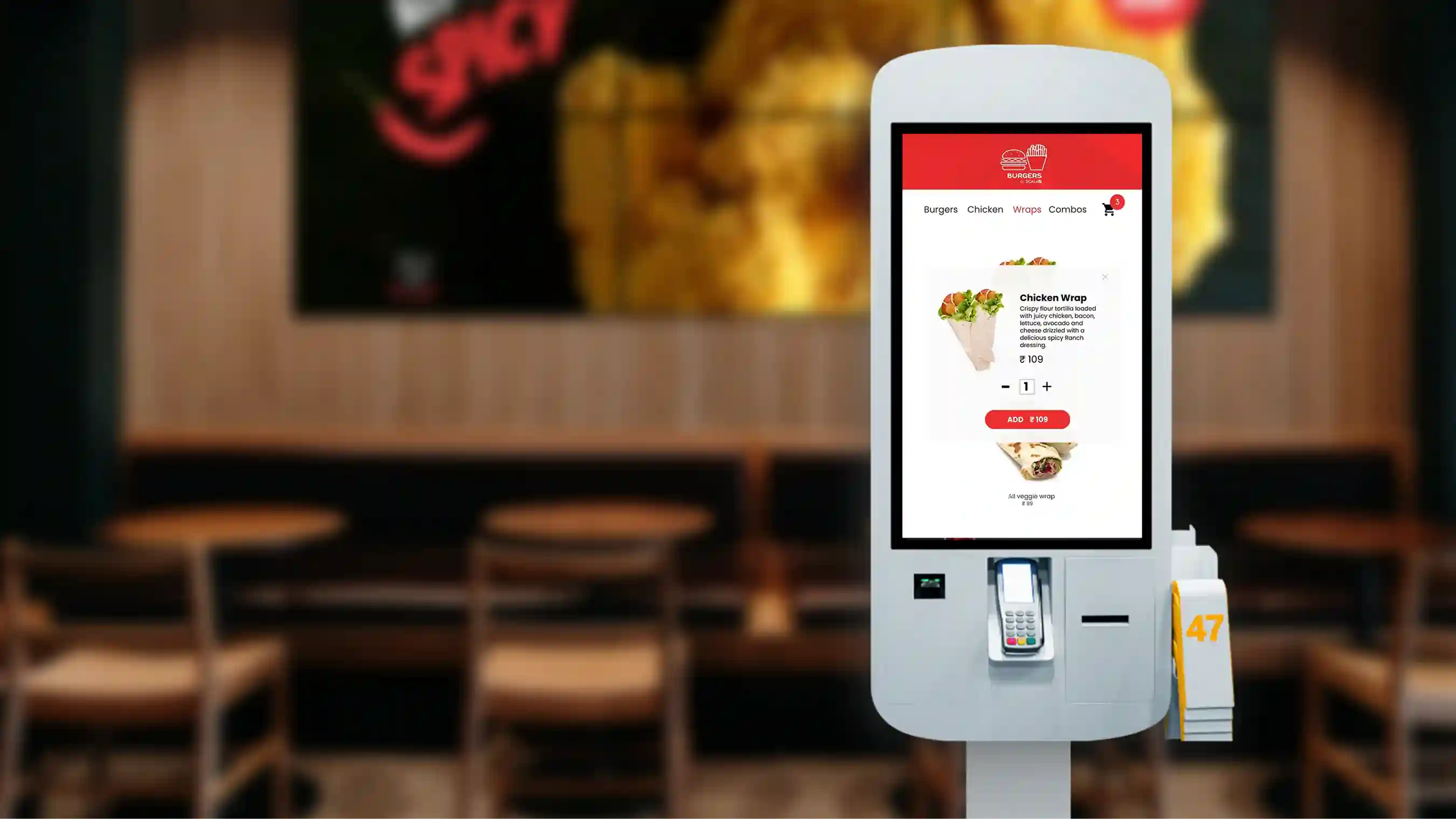
Digital Signage Solutions
A growing number of digital signage solutions are becoming more available in the market, each with their specific benefits to meet different business goals:
- Interactive Kiosks
These are usually standalone units mounted with a stand or to a wall, allowing user interaction capabilities via touchscreen to create an engaging experience. Whether to answer inquiries or wayfinding, this has been a useful touchpoint in customer service across different industries, such as retail, healthcare and educational institutions. - Video Walls
Video walls allow multiple displays tiled together to create a large, high-impact visual screen. These are often used in areas with high foot traffic to capture as much eyeballs as possible, such as in commercial areas, transport hubs, or business districts to showcase immersive messaging and advertising. - Digital Menu Boards
In replacement of traditional printed menus, digital menu boards are now commonly used in the hospitality industry to display food and beverage items, prices, promotions and services. These digital menu boards are highly efficient in updating content while showcasing high-quality videos or images, and can be a tool for upselling based on customer preferences. - Outdoor Digital Signage
These are now commonly found in public areas with high foot traffic, such as shopping and financial districts to maximize impressions. These displays are designed to withstand outdoor weather conditions for durability, making them ideal for advertising, public announcements and wayfinding in outdoor settings.
Benefits of Digital Signage
Enjoy these benefits when switching to digital signage:
Increased Customer Engagement
A digital signage can easily clock in the impressions with its high-impact, multimedia display. You can ensure your business gets ample customer attention by engaging them with visually stunning content.
Enhanced Marketing Activations
Improve marketing campaigns with the digital signage as a platform with its content management and messaging efficiency that can be targeted to specific markets at any given time.
Real-Time Updates and Flexibility
One of the significant benefits of digital signage use is how content can be managed and updated in real-time, allowing businesses to adapt to any abrupt changes and market trends in a swift manner.
Cost-Efficiency
Digital signage can be more cost-effective in the long run compared to traditional static, printed signage, as it reduces the logistics and labor that comes with print production and manually updating physical signs.
Analytics and Insights
Data is a big currency nowadays. By using a digital signage CMS, analytics and insights can be tracked and measured, enabling businesses to constantly optimize marketing strategies.
Environmental-friendly and sustainable
Display signage technology continues to improve with the development of high-quality yet energy-efficient screens. This creates a more sustainable practice and a better alternative to traditional signage, significantly reducing paper and ink usage.
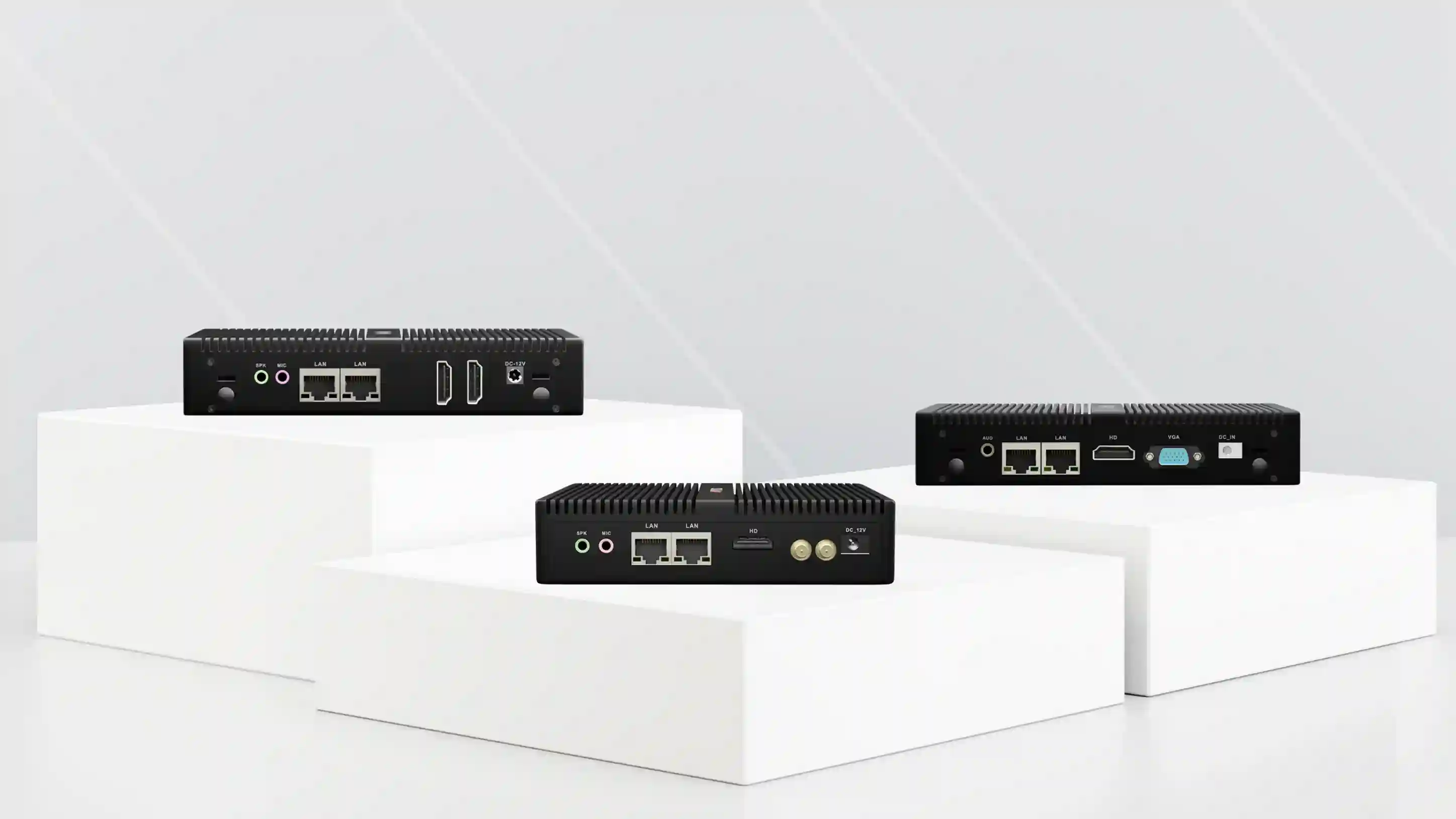
What is Digital Signage Hardware?
Digital signage hardware are the physical parts that are used to mobilize a digital signage.
- Displays and Screens
A display screen is imperative in a digital signage, as this is where the content is projected onto. Different types of displays such as LCD, LED, OLED screens are commonly used. This technology continues to be improved, especially with resolution, brightness, energy efficiency, and overall visual quality. - Media Players
Media player devices come in various formats, each with their own key features to seamlessly display content. A media player can either be built into the display, or a standalone unit connected to the screen. - Mounting Solutions
A digital signage usually runs for long amounts of time where foot traffic is high, so it needs to be mounted sturdily to ensure that it can withstand various indoor or outdoor elements.
Key Considerations When Choosing Hardware
What factors should you consider when deciding on digital signage hardware?
- Display type, size and quality
Will you be showing content with static images, videos or will there be touchscreen capabilities for interactivity and better engagement? Decide on these factors and choose the right specifications that can display the content you need. - Environment
Decide on placement, and ensure to get digital signage hardware that can endure the elements in that location i.e. if displaying outdoors, choose materials with weather-resistance to withstand natural elements. - Mounting Solutions
When mounting a digital signage, ensure the parts are made for stability, sturdiness and longevity. - Power and energy efficiency
A digital signage is turned on continuously for hours, which maximizes visibility and impressions, especially in high-foot traffic areas. Choose digital signage hardware that will enable it to run optimally yet energy-efficient.
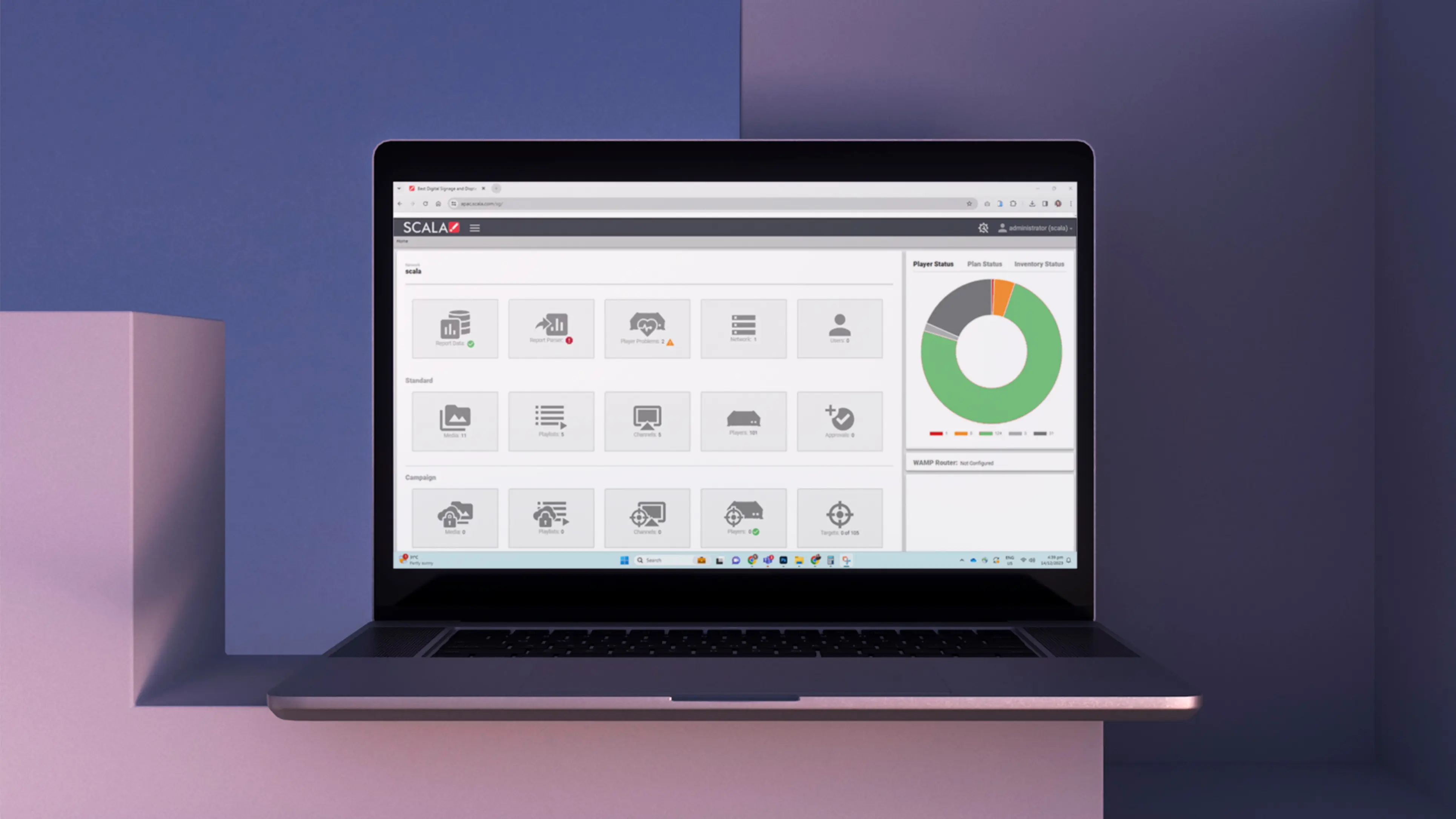
Digital Signage Software
Digital signage software is the main component that runs a digital signage technology. This is crucial to manage, maintain and control content.
Choose a reliable digital signage software with these features in mind:
- Content creation and management
A digital signage software that has the tools for design and layout, including features for text, images, videos, animations, even interactive elements would be ideal to make content creation a breeze. - Content scheduling
When content is finalized and ready to be published, it is optimal to have a digital signage software that lets you have the option to choose when and where to go live. Scheduling content, and how long you intend to display it, can easily be done in the same system. - Remote management
The beauty of having the right digital signage software is the ability to manage content remotely. Imagine the time saved and having a few to only one manpower involved when there is a network of digital signages that needs simultaneous updating. - Monitoring and maintenance
Knowing the real-time status of a digital signage is critical to ensure that it is running optimally. Having a digital signage software lets you receive alerts when diagnostic issues come up, thereby preventing potential downtime. - Cost-efficiency
By being able to manage content in a centralized system, imagine all the above features combined in one digital signage software and how that can greatly reduce operational costs.
What is Digital Signage CMS?
Digital signage CMS, or Content Management System, is the actual software for centralizing and organizing content. This is the system responsible for the creation, storage, scheduling, monitoring and maintaining content for digital signages.
Key features of a good digital signage CMS:
- User-Friendly Interface
A CMS interface that’s easy to use and navigate makes work more efficient, especially when used by a number of user and managing remotely - Content Library and Templates
A good CMS lets you have have a variety of options for content and templates to simplify content creation. - Multi-User Support
There is usually more than one person responsible for managing digital signage content, so having support for multiple users is a key feature to look for. - Real-Time Updates
A more important digital signage CMS feature is the capability update content in real-time to ensure relevant information is updated as and when needed.
Conclusion
Digital signage has set the bar high for modern business communications, which benefits companies more than using the traditional signage route. By taking advantage of digital signage technology, businesses can create versatile and high-impact visual communications to capture and grow their intended market.
Let Scala assist with your business needs through our range of digital signage solutions. Our advanced digital signage platform lets you have the tools and flexibility to create, manage, and optimize your own digital signage network to helping you achieve your business objectives effectively. Connect with us to learn more and let Scala elevate your business communication strategies for maximum results.
Frequently Asked Questions
1. What is Digital Signage Technology
Digital Signage Technology is what powers digital signage to work effectively. This uses screens, such as LCD, LED, OLED or projector, to display multimedia content such as text, images, videos and graphics. This includes digital signage hardware or the physical components such as screens and media players, and digital signage software such as the digital signage CMS or content management system to create, manage and distribute content.

2. What do you mean by digital signage?
Digital signage refers to information or content displayed on a screen for marketing and communication purposes. This includes:
- Electronic billboards on highways
- Digital menu boards in hotels and restaurants
- Interactive kiosks in malls, resorts or leisure parks
- Media boards in corporate settings for employee engagement and communications
3. What can digital signage do?
Digital signage is more than just displaying content; it also serves a number of purposes:
- Displaying marketing promotions
- Providing real-time information, such as news and weather updates
- Engaging customers with interactive content
- Providing wayfinding through maps and information in larger venues
- Internal communications in office environments
- Real-time alerts and safety information
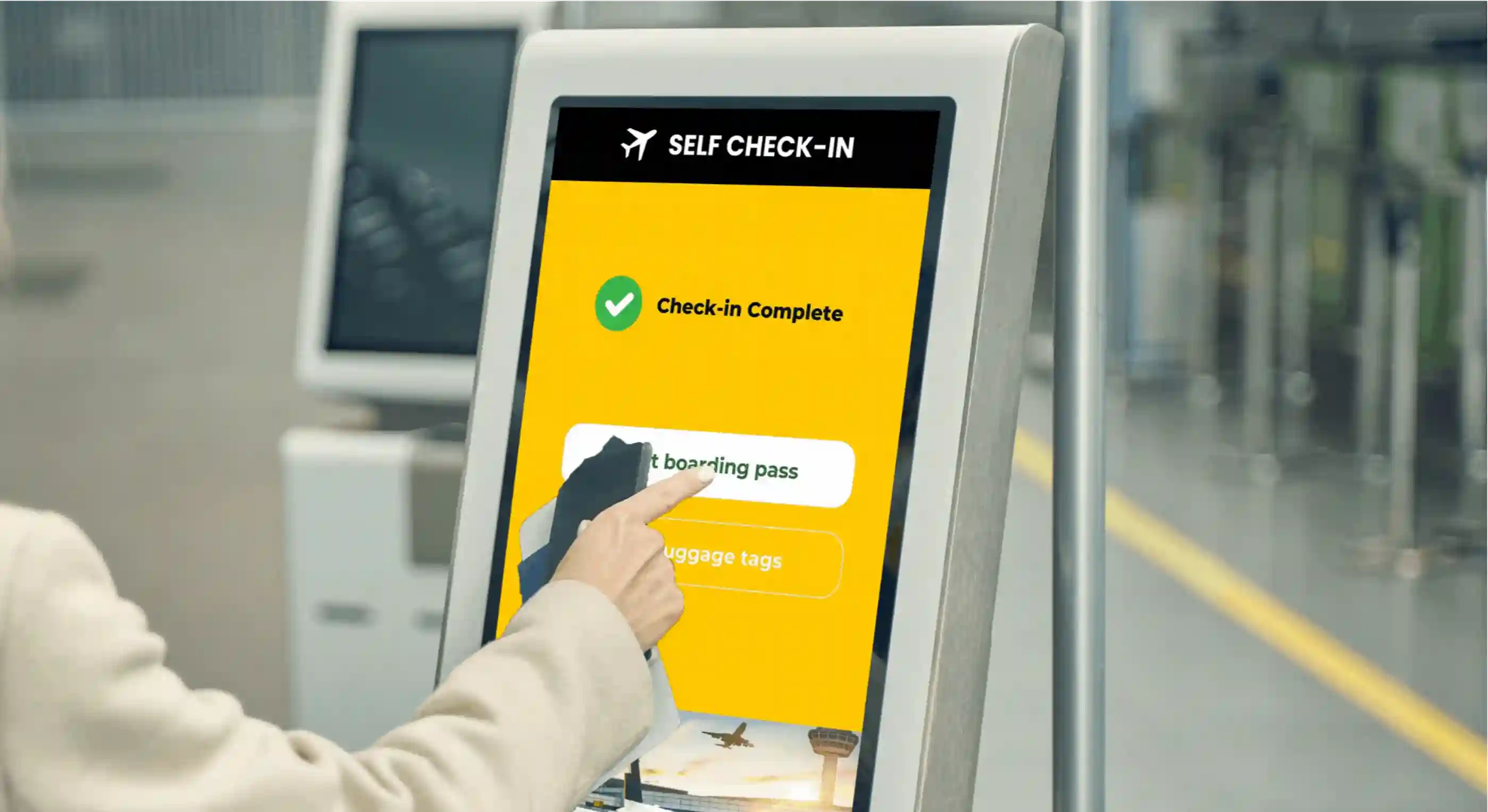
4. Who needs digital signage?
A number of businesses and industries switched the use of digital signage, such as:
- Retail stores for multimedia content and promotions
- Hotels and restaurants for digital boards for service and menu offerings
- Offices for corporate communications and employee engagement
- Hospitals for healthcare information
- Educational institutions for news, announcements and events
- Transportation hubs for real-time schedules and alerts
- Entertainment venues for event schedules and promotions
5. What are the benefits of digital signage?
Key advantages of digital signage include:
- Increase in customer attention and enhanced engagement through dynamic and interactive content
- Real-time and flexible content updates
- More opportunities for brand awareness and sales through targeted advertising
- Improved customer experience with relevant and timely information
- Cost-effectiveness over time and more sustainable compared to traditional print signage
- Valuable insights to measure viewer engagement and content effectiveness
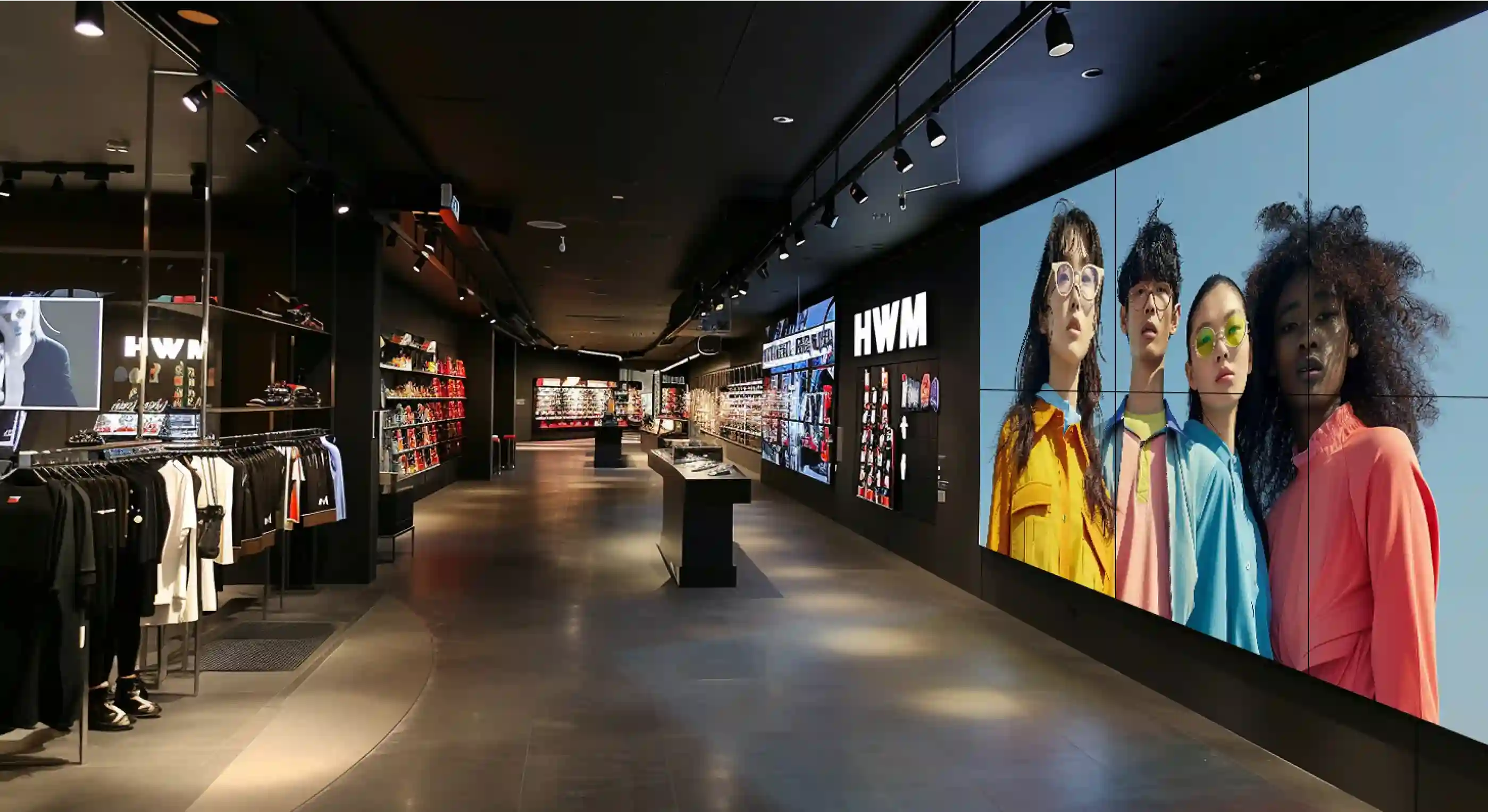
6. How does digital signage work?
Digital signage technology has made it easier to work on content management. A basic workflow looks like:
- Content Creation: Digital signage content is created directly through a design software or directly on the digital signage CMS.
- Content Management: Content is uploaded and stored in the CMS for scheduling.
- Content Distribution: Content goes live simultaneously across a digital signage network.
- Display: Content is published live and displayed on screens as per CMS schedule.
7. What is Digital Signage CMS?
A Digital Signage CMS, or Content Management System is the software that lets users create, manage, and distribute multimedia content across digital signages. The CMS also allows for scheduling and updating of content, monitoring display status, tracking and analyzing data.

8. What is Digital Signage Software?
A digital signage software is the centralized system used for content management. Key features often include:
- Content library and template design tools
- Scheduling of content
- Remote management to update content in different locations
- Integration with other systems (e.g., social media, data feeds)
- Analytics to track the performance
9. What is Digital Signage Hardware?
Digital signage hardware are the physical parts that make up a digital signage. These are:
- Digital screens (LED, LCD, OLED, projectors)
- Media players for storing and playing content
- Mounts and enclosures to secure the displays
- Network components (routers, cables) for connecting the system
- Sensors and interactive devices for touch screens and other interactive elements
10. What is a digital signage player?
A digital signage player, or media player, is a device used to store and play content from. It is interconnected to the screen and the digital signage CMS to ensure a smooth flow of content for display. A digital signage player can either be built into the display itself, or a standalone unit. Its features include:
- Support for different media formats (e.g. videos, images, HTML)
- Network connectivity for remote updates
- Scheduling capabilities to control when content is displayed
- Analytics to track engagement and performance
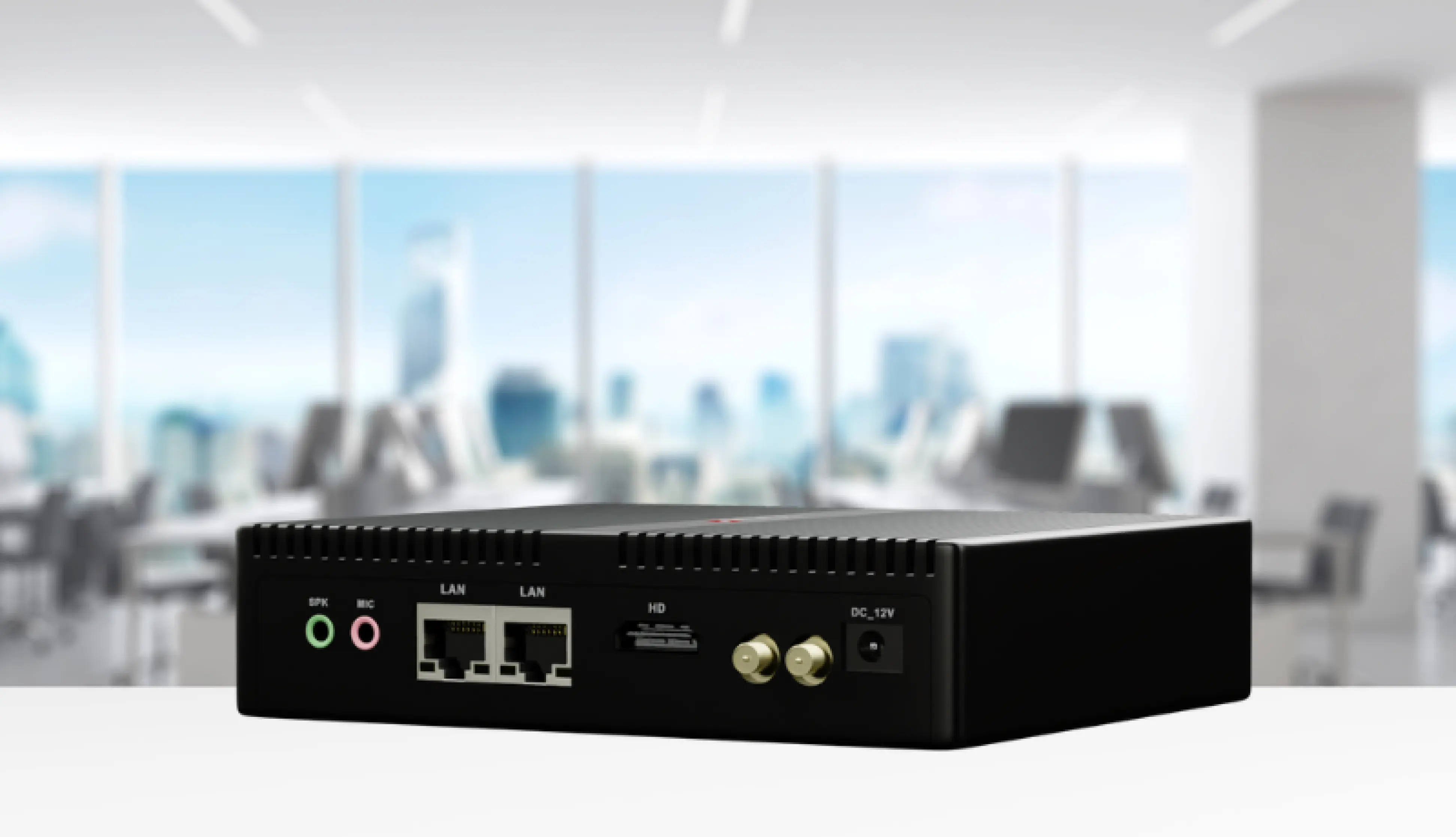
About the Author:
Scala digital signage experts share their experience and thoughts in our blog to provide practical tips and advice for real-world applications. Our team aims to offer interesting content through a variety of formats including long form articles, video logs, interviews and infographics.
